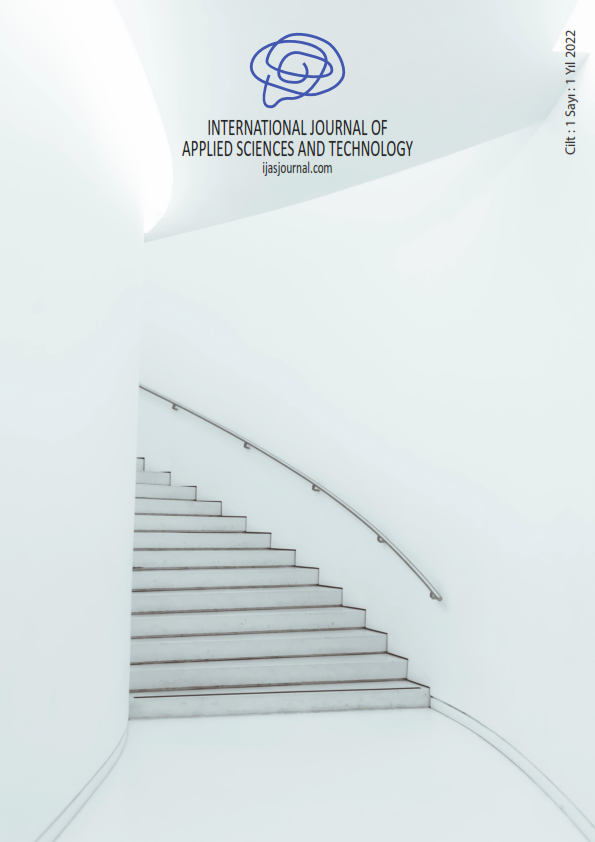EFFECTS OF DISCHARGE FAN ON THE DRYING EFFICIENCY IN FLAT-BED TYPE DRYER
Anahtar Kelimeler:
FBT Dryer, Final MC, Discharge Fan.Özet
The study of interaction among the grain, moisture, and the surrounding space (air) is key to understanding the grain- drying process. In Iran, rice (mostly Indica type) is dried by flat bed type dryer until the final MC reaches to 6 to 8%. The experiments were conducted to examine the effect of application of
discharge fan with different heights of paddy on the drying efficiency. Experiments were designed based on two different configurations of the drying methods; with and without discharge fan with three different heights of paddy including; 5, 10, and 15 cm. The humid heated air will be going out immediately by the suction of discharge fan. The drying time is established upon the average final MC to achieve about 8%. To save energy and reduce
the drying time, the distribution of temperature between layers should be fast and uniform with minimum difference; otherwise the difference of MC gradient between layers will be high and will induce grain breakage. The difference of final MC between layers in the two methods was 48-73%. The steady state of temperature
between the two methods has saved time in the range of 10-20%, and the efficiency of temperature distribution increased 17-26% by the use of discharge fan.
Referanslar
J. Hashemi, A. Borghei, N. Shimizu, &T. Kimura, “Optimization of Final Moisture Content of Paddy in Flat Bed Dryer with Consideration of Minimum Losses and Marketability in Iran,”
Journal of Agricultural Sciences and Natural Resources of Khazar, 2005, 3(2), 72-82.
L. Velupilla, &J. P. Pandey, “The impact of fissured rice on milled yields,” Cereal Chem., 1990, 67(2), 118-124.
B. K. Bala, “Drying and storage of cereal grains (Book style).,” Oxford & IBH publishing Co. PVT. LTD. New Dehli, 1997.
M. A. Basunia, & T. Abe, “Thin-layer solar drying characteristics of rough rice under natural convection,” Journal of Food Engineering, 2001, 47, pp. 295-301.
V. K. Arora, S. M. Henderson, & T. H. Burkhardt, “Rice drying cracking versus thermal and mechanical properties,” Transactions of the ASAE, 1973, 16, 320–327.
C. Chiachung, “Evaluation of air oven moisture content determination methods for rough rice,” Biosystems Engineering, 2003, 86 (4), 447- 457.
R. Aguerre, C. Suarez, & P. E. Viollaz, “Effect of drying on the quality of milled rice,” Journal of Food Technology, 1986, 21, 75-80.
W. Yang, C. Jia, T. G. Siebenmorgen, & A. Cnossen, “Intra kernel moisture gradients and glass transition temperature in relation to head rice yield variation during heated air drying of rough rice (Published Conference Proceedings style),” Paper No. 069. In proceedings of the
twelve’s International Drying Symposium. Netherland, 2000.
P. Somkiat, N. Poomsa-ad, & S. Somchart, “Quality maintenance and economy with high-temperature paddy-drying processes,” Journal of Stored Products Research, 2004.
S. Zhenhua, W. Yang, T. Siebenmorgen, A. Stelwagen, & A. Cnossen, “Thermo mechanical transition of rice kernels,” Cereal Chem., 2002, 79(3), 349-353.
O. R. Kunze, “Moisture adsorption in cereal grain technology. Areview with emphesis on rice,” Applied Eng. In Agric, 1991, 7, 717- 723.
R. C. Bautista, T. J. Siebmorgen, & A. G. Cnossen, “Fissure formation characterization in rice kernels using video microscopy (Published Conference Proceedings style),” Proceedings of the 12th international drying symposium. IDS2000, paper no. 419. Elsevier science, Amsterdam, 2000.
A. P. Mossman, “A review of basic concepts in Rice-drying research,” Critical Rev. in Food Science and Nutrition, 1986, 25(1), 49-70. World Academy of Science, Engineering and Technology International Journal of Agricultural and Biosystems Engineering Vol:3, No:1, 2009

İndir
Yayınlanmış
Nasıl Atıf Yapılır
Sayı
Bölüm
Lisans
Telif Hakkı (c) 2022 International Journal of Applied Sciences and Technology

Bu çalışma Creative Commons Attribution-NonCommercial 4.0 International License ile lisanslanmıştır.
